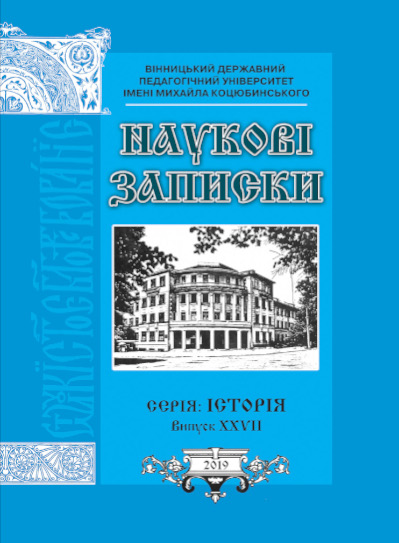Abstract
This article reflects studies of the passion genre in Music Art in the second half of the XX century – the beginning of the XXI century. The European composers from different schools constantly apply to old genre models of the sacred music modifying them in accordance to the contemporary cultural situation. This is a reason why such sacred genres are no more performed in a church, but in concert halls. That made some reasonable changes in its genre model. The goal of the article is to define a specificity of the passionmusic genre transformation based on the analysis of the Sixth symphony by S.Nasidze and the cantata «The History of Doctor Johann Faust» by Alfred Schnittke.The author of the article characterized directions of the contemporary passionmusic interpretations and their genre features. Those are based on one of the Passion Chapters of the four Gospels fulfilled with a free verse. Author’s poetic texts are used as a specific event commentator performing a reflexive function. All events take place in two time zones: real, chronological and astral which is eternal without any chronological features.
The main music genre features are a big group of performers (chorus, solo, orchestra, organ) and a huge amount of actors. Sacred texts and secular poetry were used as intermezzo. A traditional numeric structure behind a music structure is also applied to oral and opera genres. At the beginning of the XX century, composers took oral passions into account but their followers ruin mentioned genre boundaries. The reason for that is an expression of the new model in the contemporary culture. It leads not only to the blur of boundaries, but to the improvement of the genre-to-genre relations. It results in creating new synthetic passions and wasting their typical features.
The main features are: 1) Neoclassic identity, that recreates the ancient style; 2) concert instead of liturgical genre scenario which allows composers play with the traditional texts adding different visual effects (music-lights, choreography, costumes, scenario); 3) expanding its geography. Analyzing the complicity of texts by S.Nasidze and A.Schnittke, it’s reasonable to sum up that modern composers interpret the ancient genre model according to new modern traditions. The symphony by S.Nasidze with the subtitle «Passions» is a specific metaphor which makes the audience think in reflexive way. On the contrary, all genre peculiarities of the oral passions in cantata «The History of Doctor Johann Faust» by Alfred Schnittke emphasizes on a redefinition of the medieval warlock image. Having analyzed the mentioned music pieces, we can define two different ways of passionmusic functioning and transforming in the second half of the XX century – the beginning of the XXI century which demonstrate vivid changes in modern sacred music.
References
Березовчук Л. Н. «Страсти по Луке» К. Пендерецкого и традиции жанра пассионов : к вопросу о стилевых взаимодействиях // Вопросы музыкального стиля: сб. науч. тр. Ленинград: ЛГИТМиК, 1978. С. 121–134.
Верещагіна-Білявська О. Є. Становлення і розвиток рassiоnmusic як відображення релігійних і мистецьких процесів в європейській культурі // Наукові записки Вінницького державного педагогічного університету імені Михайла Коцюбинського. Серія: Історія. Вип. 25. Вінниця: ФОП Корзун Д. Ю., 2017. С. 257-263. https://doi.org/10.31652/2411-2143-2017-25-257-262
Габай Ю. С. К проблеме семантического инварианта жанра. Контекст жанра Passionmusik // Жанрово-стилистические тенденции классической и современной музыки. Л.: ЛГШМ и К, 1980. С. 5–22
Ивашкин А. В. А.Шнитке. Штрихи к творческому портрету // Музыкальная жизнь. 1987. №17. С.19-21
Криворукова О. Е. Оратории на рождественский и страстной сюжеты последней четверти XX века в аспекте диалога традиций: дис. … канд. искусствоведения: 17.00.03. Харьков, 2009. 252 с.
Рау Е. Р. Жанр пассиона в музыкальном искусстве: общий исторический путь и судьба в XX– XXI вв.: дисс. …. канд. искусствоведения: 17.00.02. Санкт-Петербург, 2018. 329 с.
Савенко С.И. Musica sacra Арво Пярта // Музыка из бывшего СССР: сб. ст. Москва: Композитор, 1996. С. 208–228.
Brown W.H. New life for the musical Passion: selected Passions for liturgical worship, 1955–2004 // Thine the Amen: essays on Lutheran church music in honor of Carl Schalk / ed. by C. H. Messerly. Minneapolis, 2005. Pp. 195–224.
Budziak JK. Liminality, Postmodernity and Passion: Towards a Theoretical Framework for the study of 21st Century Choral Passion Settings. Religions. 2017; 8(12):265. https://doi.org/10.3390/rel8120265
Budziak J.K. Passion beyond postmodernism: The choral Passion settings of Esenvalds and Lang, viewed through a liminal lens : dissertation prepared to the degree of Doctor of Musical Arts. Evanston, 2014. 183 p.

This work is licensed under a Creative Commons Attribution 4.0 International License.





